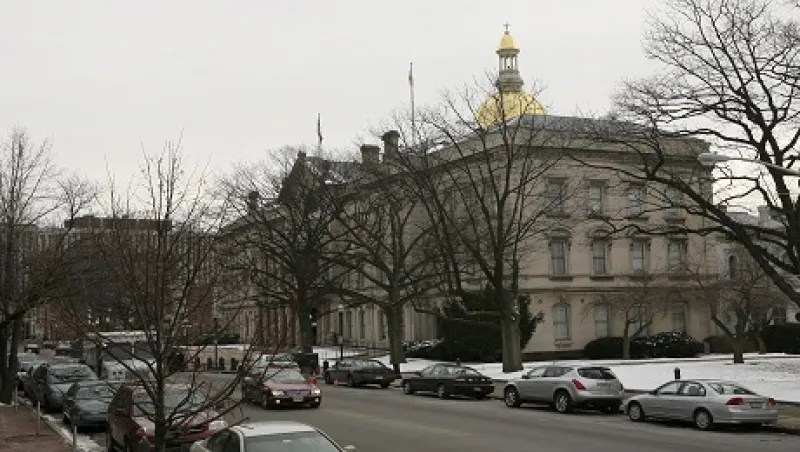In June 2007 the three major public pension systems in New Jersey — Public Employees’ Retirement System, Teachers’ Pension and Annuity Fund and Police and Firemen’s Retirement System — held a combined total of $89.7 billion in assets. By June 2009, the end of its fiscal year, that number had fallen to $69.9 billion, triggering a drop in the three pensions’ average funded ratio, the measure of pension assets to liabilities, from 76.1 percent to 66.2 percent. At the same time as New Jersey’s pension assets and funded ratios were falling, the total pension cost as a percentage of the state budget rose from 5.6 percent to 8.5 percent.
Cue the pension police.
Not long after the biggest financial crisis in four generations, cries began in earnest to close these systems to new hires and replace them with defined contribution, or retirement savings, plans. Rather than make that drastic move, though, New Jersey responded by cutting cost-of-living adjustments for all employees; increasing employee contributions into their pension plans; and, for new hires, increasing age or tenure eligibility levels and average salary periods, and reducing the benefit factor.
A broad group of conservative politicians, citizens and think tanks in New Jersey and around the U.S. began calling to shut out new firefighters and police, teachers and sanitation workers from the defined benefit plans that were long a part of traditional public employee compensation packages. In all the clamor, it appears that one important detail has been drowned out. The fact is, the majority of states have been quite flexible in initiating changes to shore up their damaged funds and are on track to bring pension costs back to precrisis levels — or lower.
Since 2008, in an effort to contain costs, 46 states have passed pension reforms. The nature and extent of these statewide changes can be found in a new report from the Center for Retirement Research at Boston College entitled, “State and Local Pension Costs: Pre-Crisis, Post-Crisis and Post-Reform.” Published in February 2013, the report describes the changes and budgetary impact of 32 pension plans in 15 states. The sample was selected for its range, from the most challenged pension systems to some of the best-funded plans. The 32 plans represent 70 percent of aggregate liabilities and 65 percent of members in the Center’s Public Plans Database.
A broad range of reforms, including increased employee contribution rates and reduced cost-of-living adjustments, were initiated across 29 of the 32 pension schemes. For new hires, changes include increasing the age or tenure eligibility requirement; increasing the average salary period; and reducing the benefit accrual factor. New Jersey, along with Illinois, was chosen as a state that represented a particularly troubled pension system and made substantial changes.
Once the reforms are fully phased in, defined by the study as occurring in 2046, the employer cost for funding the pension obligations accrued each year will be halved over the long term, from 8.2 percent of payroll in 2007 to 4.4 percent.
“The plan design changes were commensurate with the challenges,” observes Jean-Pierre Aubry, assistant director of state and local research at the center. “Costs were brought back to precrisis level.”
However, Rebecca Sielman, a principal in the Windsor, Connecticut, office of actuarial firm Milliman, is concerned that some states have gone overboard with the long knives. The CRR study found that 40 percent of the sample appeared to take the crisis as an opportunity to reduce costs below precrisis level. What’s more, poorly funded plans were more likely to “overshoot” than well-funded plans. “It’s interesting that the study concluded the cutting may have overshot its mark,” says Sielman, who wrote her own study on public pension funding in 2012. “The numbers were more than strictly necessary.”
Pension costs have always been a relatively small part of state and local government spending, according to the National Association of State Retirement Administrators. In 2009, the U.S. Census Bureau reported approximately 3 percent of all state and local government spending was used to fund pension benefits for public employees. That year New Jersey spent 1.86 percent of its budget on pension costs. Rhode Island, at 5.16 percent, represented the largest proportion of a state’s budget while Vermont represented the smallest, at 0.90 percent.
Still the recent growth of pension costs has drawn outsized attention. So the overall budget impact of the public pension reforms is significant: Pension costs are expected to steadily decline from a 2009 high of 8.5 percent of state budget to 3.3 percent by 2046. To get there, however, two factors that had reduced some plans’ assets, even before the crisis, cannot be overlooked: Employers (that is, the taxpayer) must continue to make annual contributions into the public plans, and state legislatures have to refrain from “borrowing” assets from its pension system.
For Paul Zorn, director of governmental research at Gabriel, Roeder, Smith & Co., it is important that government pension systems have proven they can react nimbly to changing economic conditions. “I think that’s good news,” says Zorn. “This is an evolutionary process. Public pensions have been good about making adjustments when they have to.” Cathie Eitelberg, the national public sector market director at the Segal Company in Washington, D.C., echoes that thought. “This shows that defined benefit plans are nimble,” she says.
Eitelberg, who reviewed the findings for CRR before publication, adds, “They can do reductions based on the financial environment they are in.” She is looking for a follow-up to this report that expands beyond the 32 largest public pension plans.






